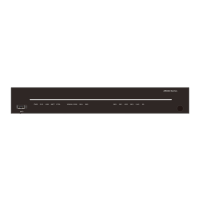Quidway AR 28 Series Routers Installation Manual Chapter 7 Troubleshooting
Huawei Technologies Proprietary
7-2
Baud: 9600
Data bits: 8
Stop bit: 1
Parity: None
Flow control: None
Terminal emulation: VT100
Reconfigure the parameters if their values are different.
7.3 Troubleshooting SDRAM
I. Troubleshooting of “nothing being displayed on the terminal”
Symptom:
After the POST of the router, despite the normal power system (the POWER LED is ON)
and proper connection of the console cable, there is no display on the console terminal.
Solution:
If the user is sure that the power system and configuration system have no faults,
please contact the agent of Huawei Technologies Co., Ltd. With his consent, open the
chassis to check whether the SDRAM has become loose. If that is the case, you may
remove and reinstall the SDRAM. For the operation method, please refer to Section 6.2
“Hardware Maintenance” in this manual.
II. Troubleshooting of repeated reboot
Symptom:
z After the information “Now testing memory...” appears, the system restarts
repeatedly. Or,
z After displaying the information “System now is Starting ...”, the system restarts
repeatedly, and sometimes gives a prompt message “Copied program error.”
Solution:
Generally, such faults are caused by the damage to SDRAM. If the SDRAM is seriously
damaged, the problem will be found while testing the memory, and the system will
reboot. If the SDRAM is slightly damaged, the problem will be found during the process
of system starting, and the system will reboot, giving the prompt message “Copied
program error”.
Normally, the symptom is present when the SDRAM is damaged. If the damage is
serious, the router can find it when testing memory and reboot as the result. If the
damage is not serious, the router can find
If the SDRAM is damaged, replace it with a new one (before opening the chassis,
contact your agent for permission). For the replacing procedure, refer to Section 6.2
“Maintain the Hardware” in this manual.

